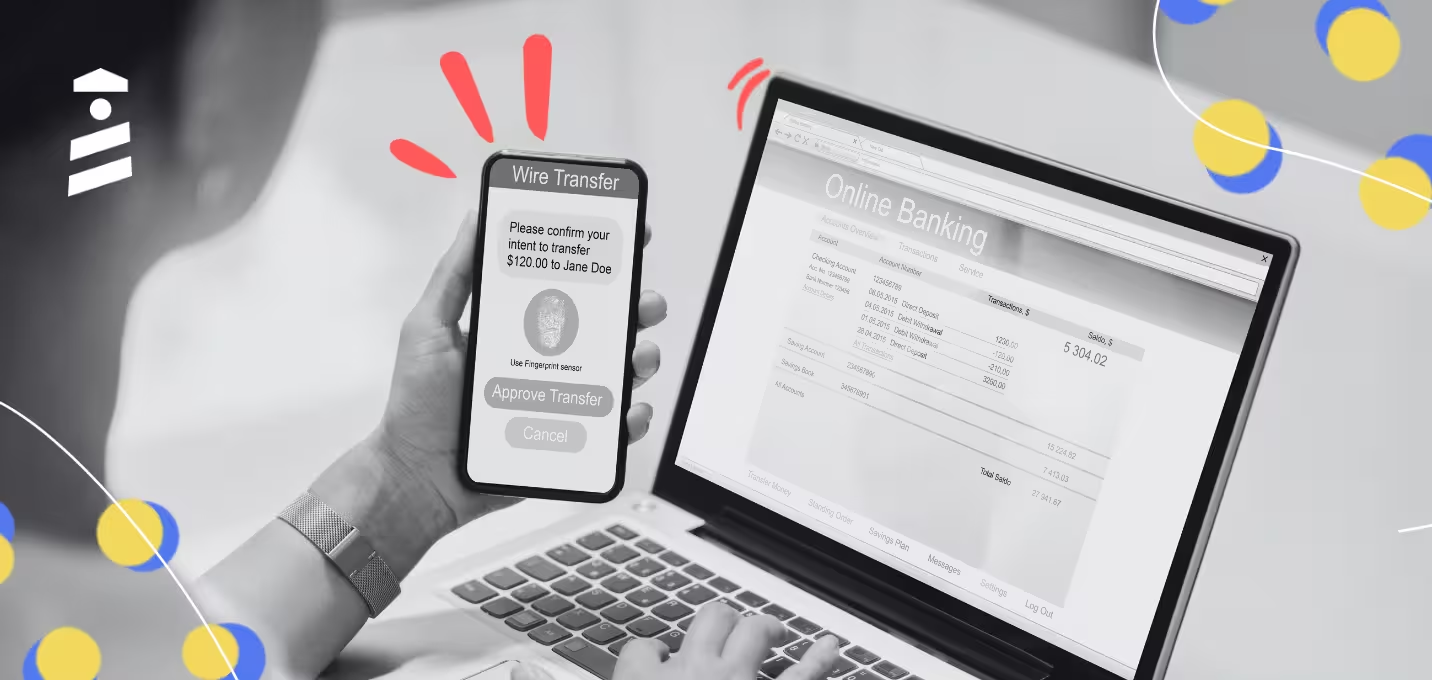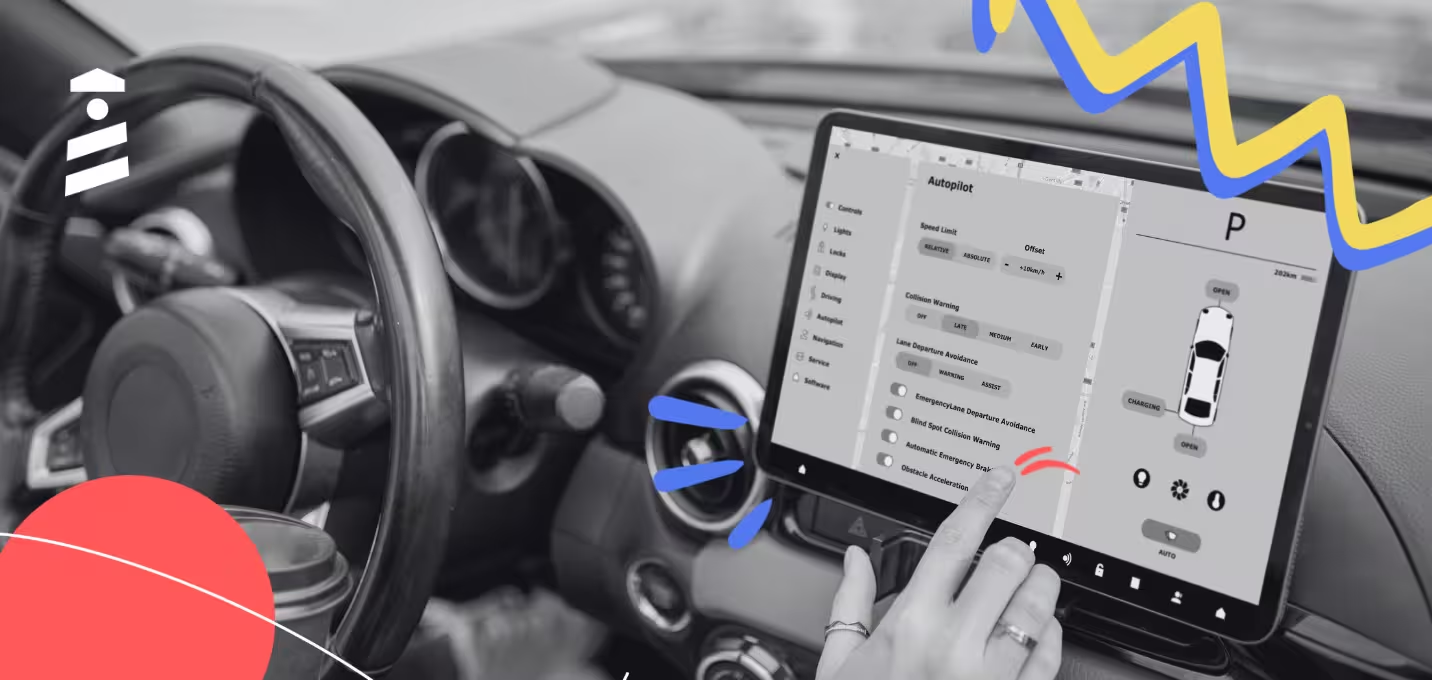

In the competitive world of SaaS businesses, you need to understand customer sentiment to ensure their satisfaction.
This is where Net Promoter Score (NPS) becomes a vital tool.
Specifically tailored for the SaaS industry, NPS provides invaluable insights into customer loyalty and potential areas for growth.
This guide will delve into the importance of NPS for SaaS companies, how to effectively run and utilize NPS surveys, and the best practices for leveraging NPS data to drive your business forward.
Whether you're looking to
- reduce churn,
- enhance your product offerings, or
- boost customer advocacy, mastering SaaS NPS can significantly impact your growth trajectory.
Let's start without further due.
Here's the TL;DR if you wish you had the time.⬇︎
TL;DR
- Net Promoter Score (NPS) is crucial for SaaS businesses to understand customer loyalty and satisfaction.
- High NPS can reduce churn, enhance product offerings, and boost customer advocacy, leading to organic growth.
- NPS segments customers into Promoters, Passives, and Detractors, providing insights into behaviors and preferences.
- Calculate NPS by subtracting the percentage of Detractors from Promoters based on survey responses.
- Run effective NPS surveys by
- defining objectives,
- choosing the right timing, and
- crafting clear questions.
- Use email, in-app, website, SMS, post-transaction, customer service interactions, social media, and automated campaigns for survey distribution.
- Analyze NPS data through segmentation, trend analysis, qualitative feedback, benchmarking, root cause analysis, and actionable insights for continuous improvement.
The Crucial Role of NPS in Driving SaaS Business Success
Unlike traditional businesses, SaaS companies operate on a subscription model. It makes customer loyalty and satisfaction paramount.
NPS helps
- understand customer sentiment,
- identify potential churn risks, and
- enhance product offerings based on user feedback.
🚀 Moreover, in the highly competitive SaaS market, acquiring new customers can be significantly more expensive than retaining existing ones.
Therefore, maintaining a high NPS can ✨directly✨ impact revenue and profitability.
By regularly measuring NPS, you can proactively
- address customer issues,
- foster long-term relationships, and
- turn satisfied customers into brand advocates.
These advocates are not only more likely to renew their subscriptions but also to recommend your service to others, driving organic growth.
Additionally, NPS provides actionable insights that can guide strategic decisions, from product development to customer support. In this way, you can ensure that your company remains aligned with customer needs and expectations.
Decoding NPS Scores for SaaS Success
NPS categorizes respondents into three groups: Promoters, Passives, and Detractors.
In the context of SaaS, these categories can provide nuanced insights into customer behaviors and preferences.
1- Promoters (Score 9-10)
🤩 Promoters are highly satisfied customers. They are likely to renew their subscriptions and enthusiastically refer others to your service.
They are typically loyal advocates of your product.
💡To make the most of their positive sentiment, it's essential to encourage them to share their experiences on social media, participate in case studies, and provide reviews.
Leveraging their feedback can help identify the most appreciated features of your service.
Additionally, consider implementing a referral program or providing special offers to maintain their enthusiasm and loyalty.
2- Passives (Score 7-8)
🤔 Passives are generally satisfied but not particularly enthusiastic about your service.
They may continue to use your product but are also susceptible to switching to competitors if a better offer arises.
💡 To convert Passives into Promoters, engage them with personalized offers or tailored communications that enhance their satisfaction and loyalty.
Conduct follow-up surveys to understand their specific needs and what could elevate their experience.
Focus on improving product features and services that matter most to them, making your offering more compelling and reducing the likelihood of them switching to a competitor.
3- Detractors (Score 0-6)
😟 Detractors are unhappy customers who can negatively impact your brand through word-of-mouth.
They are at a high risk of churn and can discourage potential customers from trying your service.
💡To address their dissatisfaction, respond to their issues swiftly and effectively to prevent churn, and demonstrate your commitment to customer satisfaction.
Offer personalized support to resolve their problems and rebuild trust.
Utilizing their feedback to identify weaknesses in your product or service can help implement necessary improvements, turning their negative experiences into opportunities for growth.
How to Calculate New Promoter Score?
Calculating the Net Promoter Score (NPS) is a straightforward process.
First, you survey your customers, asking them to rate the likelihood of recommending your product or service to others on a scale of 0 to 10.
Based on their responses, categorize them into Promoters (9-10), Passives (7-8), and Detractors (0-6).
To calculate your NPS, subtract the percentage of Detractors from the percentage of Promoters.
The resulting score can range from -100 to 100.
The higher the score, the better your customer loyalty and satisfaction.
How to Run NPS Surveys for Your SaaS
Running effective NPS surveys involves several key steps to ensure you gather meaningful and actionable feedback from your customers.
Here they are:
1- Define Your Objectives
Before launching an NPS survey, clearly define what you hope to achieve.
Are you looking to
- measure overall customer satisfaction,
- identify areas for improvement or
- gauge the effectiveness of a recent feature update?
Having specific goals will help you design a more focused and effective survey.
2- Choose the Right Timing
Timing is crucial when conducting NPS surveys.
Consider sending surveys at key touchpoints in the customer journey, such as
- after onboarding,
- following a support interaction or
- after a significant product update.
This ensures that feedback is relevant and timely.
3- Craft Clear and Concise Questions
📣 The core of the NPS survey is the question, "How likely are you to recommend our product/service to a friend or colleague?" rated on a scale from 0 to 10.

Additionally, include an open-ended follow-up question asking customers to explain their rating.
This qualitative feedback provides context and deeper insights into their scores.
4- Select the Appropriate Survey Method
Decide how you will distribute your NPS survey.
Common methods include email surveys, in-app pop-ups, and direct links on your website or customer dashboard.
Choose the method that best suits your audience and ensures a high response rate.
5- Segment Your Audience
Segment your audience based on relevant criteria such as customer lifecycle stage, plan type, or usage patterns.
This allows you to analyze NPS scores within specific groups and tailor your follow-up actions accordingly.
6- Follow Up with Respondents
After collecting responses, it's essential to follow up with your customers.
Thank Promoters for their positive feedback and encourage them to leave reviews or share their experiences.
Engage Passives to understand what improvements they need.
Address Detractors' concerns promptly to mitigate churn and turn their experience around.
7- Analyze and Act on Feedback
Regularly analyze the NPS data to identify trends and common themes.
Use this information to inform product development, customer support strategies, and overall business improvements.
🎯 Implementing changes based on customer feedback demonstrates your commitment to their satisfaction and can lead to higher NPS scores over time.
By carefully planning and executing your NPS surveys, you can gain valuable insights into customer sentiment and drive continuous improvement in your SaaS business.
How to Distribute Your NPS Surveys
Effectively distributing your NPS survey is crucial to obtaining a high response rate and valuable feedback from your customers.
Here are several methods to ensure your NPS survey reaches the right audience at the right time:
1- Email Surveys
Email is a popular and effective method for distributing NPS surveys.
Send personalized emails to your customers, inviting them to participate in the survey.
Ensure the email is concise and includes a clear call-to-action (CTA) to take the survey.
Consider including the NPS question directly in the email body to make it easy for recipients to respond.
2- In-App Surveys
For SaaS businesses, in-app surveys are highly effective as they target users while they are engaged with your product.
Use a pop-up or slide-in survey within your application to ask the NPS question.
This method captures feedback in real time, providing immediate insights into the user experience.
3- Website Surveys
Place NPS surveys on your website, especially in areas with high user traffic, such as your customer dashboard, help center, or account settings page.
Using a widget or a modal dialog, you can prompt users to provide their feedback without interrupting their workflow.
4- SMS Surveys
For customers who prefer mobile communication, SMS surveys can be an effective way to reach them.
Send a brief text message with a link to your NPS survey.
Ensure the survey is mobile-friendly and easy to complete on a smartphone.
5- Post-Transaction Surveys
After a customer completes a significant transaction or interaction, such as a purchase, support request, or feature use, follow up with an NPS survey.
This timing captures their immediate impressions and provides contextually relevant feedback.
6- Customer Service Interactions
After a customer interacts with your support or customer service team, send an NPS survey to gauge their satisfaction with the service provided.
This method helps you assess the effectiveness of your support team and identify areas for improvement.
7- Social Media
Leverage your social media channels to distribute NPS surveys to your followers and customers.
Share a link to the survey on your profiles or use direct messages to reach out to specific users.
This approach can be particularly effective for engaging with your more active and vocal customers.
8- Automated Campaigns
Integrate NPS surveys into your automated email and messaging campaigns.
For instance, set up triggers to send NPS surveys at specific intervals, such as 30 days after sign-up or quarterly for long-term customers.
Automation ensures consistent and timely distribution.
By using a combination of these methods, you can maximize your reach and gather comprehensive feedback from your customer base.
Tailor your distribution strategy to match your customers' preferences and behaviors, ensuring higher response rates and more accurate insights.
Best Tools for NPS
1- SurveyMonkey

SurveyMonkey is a popular survey platform that offers robust NPS functionality.
It allows you to create customized NPS surveys, distribute them via multiple channels, and analyze the results with powerful reporting tools.

Its user-friendly interface and integration capabilities make it a top choice for many businesses.
Pricing
SurveyMonkey's pricing includes the Team Advantage plan at $25 per user per month, the Team Premier plan at $75 per user per month, and custom pricing for their Enterprise plan based on the scale and requirements of the business.
2- Qualtrics

Qualtrics is an advanced survey tool known for its comprehensive suite of features.
It provides extensive NPS survey options, including advanced analytics and reporting.

Qualtrics also integrates with various CRM and marketing platforms, allowing you to streamline data collection and analysis.
Pricing
Qualtrics has a free Basic plan, and for advanced features and enterprise needs, it offers custom pricing.
3- Delighted

Delighted specializes in NPS surveys and offers a straightforward, intuitive platform.
It enables you to send NPS surveys via email, SMS, web, and other channels.

Delighted also provides real-time analytics and insights, helping you quickly identify trends and areas for improvement.
Pricing
Delighted provides a free plan for small-scale usage.
Their premium plans start at $224 per month (billed annually) for more advanced features and higher response volumes.
4- UserGuiding

UserGuiding empowers businesses to enhance customer engagement and satisfaction through personalized onboarding experiences and targeted in-app messaging.
UserGuiding's approach allows SaaS companies to strategically deploy NPS surveys at key touchpoints within their product journey.
By embedding surveys directly into the application interface, UserGuiding ensures that feedback is collected in-context, when user engagement and sentiment are most relevant.

This real-time feedback mechanism not only boosts survey response rates but also provides immediate insights into customer satisfaction levels.

Furthermore, UserGuiding's robust analytics and reporting features enable businesses to analyze NPS data effectively.
By tracking trends, identifying user segments, and measuring changes in NPS scores over time, companies can make data-driven decisions to improve product features, enhance customer support strategies, and ultimately drive higher customer loyalty.
Give it a try today, see the results yourself!
Pricing
UserGuiding has a Basic plan at $82 per month when billed annually and a Professional plan at $166 per month, also billed annually.
For larger enterprises or custom needs, the Corporate plan provides tailored pricing upon request.
5- Typeform

Typeform offers a unique, interactive survey experience that can increase response rates.
Its NPS survey templates are easy to customize and distribute.

Typeform also provides integration with various tools and platforms, enabling seamless data flow and analysis.
Pricing
Typeform offers its Basic plan at $29 per month, the Plus plan at $59 per month, and the Business plan at $99 per month.
6- Retently

Retently focuses exclusively on NPS and customer feedback, offering automated survey campaigns and in-depth analytics.
It allows you to segment your audience, track trends over time, and integrate feedback with your CRM or other business tools.

Retently's specialization makes it a strong choice for NPS-centric strategies.
Pricing
Retently's pricing starts with the Essentials plan at $29 per month.
For more advanced features, the Advanced plan is priced at $99 per month, and the Professional plan costs $199 per month.
7- Wootric

Wootric is a dedicated NPS tool that provides multi-channel survey distribution and real-time feedback collection.
It integrates seamlessly with popular SaaS platforms like Salesforce, Intercom, and Slack.

Wootric also offers advanced analytics and machine learning capabilities to help you derive actionable insights from your NPS data.
Pricing
Wootric offers a free plan with basic features suitable for smaller-scale use.
For businesses with more specific needs, the tool provides custom pricing based on the required scale and features.
8- SurveySparrow

SurveySparrow offers a versatile platform for conducting NPS surveys with a conversational approach.
It supports multiple distribution channels, including email, web, and mobile.
SurveySparrow's engaging survey format and detailed reporting tools make it a valuable asset for improving customer satisfaction.
Pricing
SurveySparrow offers multiple pricing plans starting with the Basic plan at $19 per month for 5000 responses.
For more extensive use, the Essentials plan is available at $49 per month for 15000 responses.
The Business plan is priced at $99 per month for 100000 responses, while the CX Basic plan costs $199 per month for the same response volume.
How to Use NPS Data for Growth
Analyzing Net Promoter Score (NPS) data is crucial for leveraging insights that drive sustainable growth for SaaS businesses.
Here’s how you can effectively analyze and utilize NPS data to foster improvement and enhance customer loyalty:
1. Segmentation Analysis
Begin by segmenting your customers into Promoters, Passives, and Detractors based on their NPS scores.
This segmentation helps identify patterns and differences in satisfaction levels among different user groups.
2. Trend Analysis
Track changes in your NPS scores over time to understand trends and gauge the effectiveness of your initiatives aimed at improving customer experience.
Look for spikes or dips in scores and correlate them with specific events or changes in your product or service.
3. Qualitative Feedback Analysis
Pay close attention to the qualitative feedback provided by customers, especially from Detractors and Passives.
Extract common themes, pain points, and suggestions for improvement that can inform strategic decisions and product roadmap prioritization.
4. Benchmarking
Compare your NPS scores against industry benchmarks or competitors’ scores to gain perspective on your performance and identify areas where you can differentiate and excel.
5. Root Cause Analysis
When addressing issues highlighted by Detractors, conduct root cause analysis to uncover underlying reasons for dissatisfaction.
This may involve deeper investigation into product functionality, customer support interactions, or overall user experience.
6. Actionable Insights
Translate NPS data into actionable insights by prioritizing initiatives that are likely to have the greatest impact on improving customer satisfaction and loyalty.
Align these insights with your business goals and roadmap planning.
7. Continuous Improvement
Use NPS data as a continuous feedback loop to drive iterative improvements in your product, customer service strategies, and overall business operations.
Regularly revisit NPS metrics and adjust your approach based on evolving customer needs and market dynamics.
Elevating SaaS NPS: Innovative Approaches for Superior Performance
1- NPS Benchmarks
Compare your NPS score with industry benchmarks and competitors to understand where you stand in relation to market norms.
This analysis helps identify strengths and weaknesses, guiding strategic improvements to enhance overall customer satisfaction and loyalty.
2- Transactional NPS
Measure NPS immediately after critical interactions such as onboarding, support tickets, or billing cycles.
This approach provides real-time insights into specific touchpoints of the customer experience, allowing you to address issues promptly and optimize processes for smoother customer journeys.
3- NPS Pulse Surveys
Conduct regular, brief NPS surveys to track fluctuations in customer sentiment over time.
By consistently monitoring changes in NPS scores, you can identify trends, validate improvements, and proactively adjust strategies to maintain or enhance customer satisfaction levels.
Wrapping Up
By embracing NPS, you can truly listen to your customers, reduce churn, and foster growth.
Implement these best practices and tools to enhance customer satisfaction and loyalty.
Remember, every piece of feedback is a step toward improvement. Best of luck in your efforts to make your SaaS business thrive, and goodbye for now!

















.svg)
.svg)
.svg)
.svg)
.svg)

.svg)
.svg)












.svg)
.svg)




.png)

















